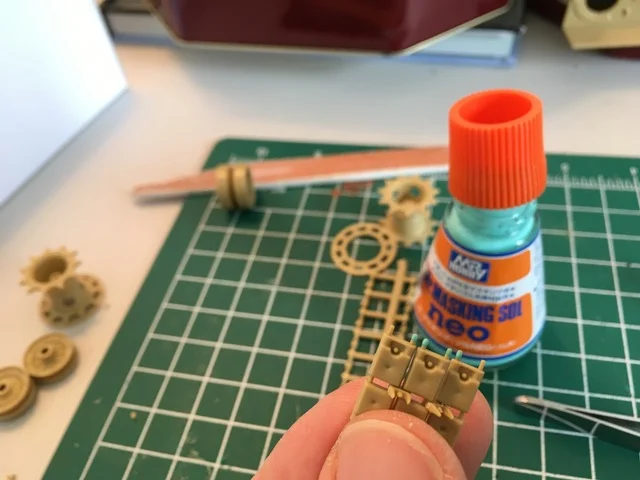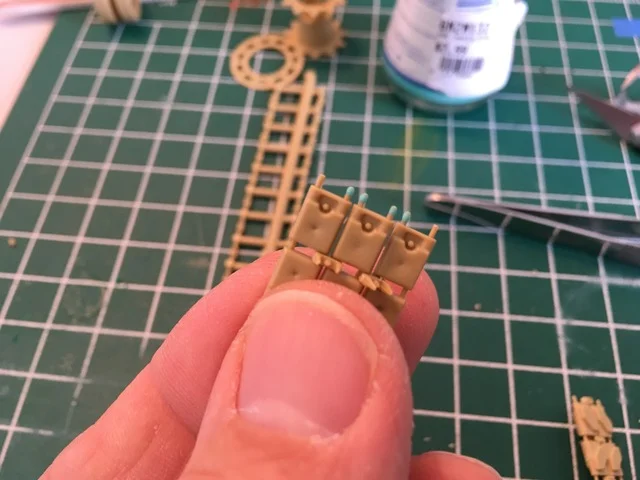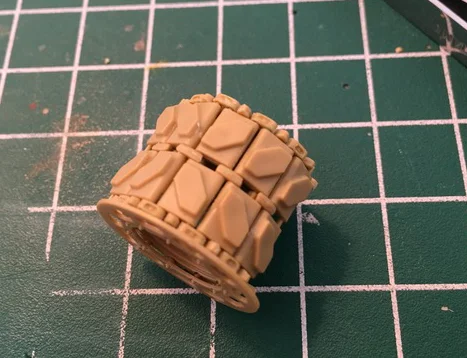We are lucky to live in an era of modeling when molding technology allows perfect injection molded track components. The fine folks at Panda provide several examples of individual track links that build into outstandingly accurate representations of the real think. Unfortunately, assembling track pads, links and guide horns so all the pieces stay together until the model is fully painted and built up poses a challenge. Cements don’t allow enough time to build an entire length of track. I think I’ve hit on a technique that provides the time needed to assemble lengths of track. Better still, since many tracks are directional, this technique is reversible- you can take the assemblies apart and rebuild them, if necessary. I discovered this technique while building Panda’s M1A1 Abrams.
First, the parts have to be cut from spurs, cleaned up and grouped in logical order. Once that’s done, we’re off to the races. I separated only those needed to complete one track length. That way, I don’t over produce them. Next, I work on a segment of 5 links at a time, making sure that if the trackpads are directional, all face the same direction. Next, if needed, I attach the linking track guides using a pair of hemostats for positive grip. Then, using a latex masking agent (I’m using Mr. Hobby Mr. Masking Sol Neo) I dab a minimal amount of masking goo on the track pins. You don’t want to get too much on the pins, but if you do, no sweat- you just use your fingers to rub the stuff off and start again. The goal is to get the links to stick. Once I’ve got a segment done, I put it aside and start the next. Once dry, you can link those segments together and let them dry. When the length is complete you’ve got a track run that will be flexible enough to bend around the sprocket and tensioner, while also allowing you to paint the entire run. I hope this works for you.
The first picture shows individual track pads, track guides and track links awaiting cleanup
The second and third pictures shows the track pins dabbed with just enough latex masking agent to bond with the track links, but so much that it will ooze out.
The fourth picture shows a latex connected track segment bent around a sprocket. Note I’ve failed to get them all going in the same direction. No worries- once dry, the latex rolls off with a pinch of your fingers. I’d never be able to fix a faux pas like this with cement.
Sincerely, Jim McClain, Havre de Grace, MD, USA


